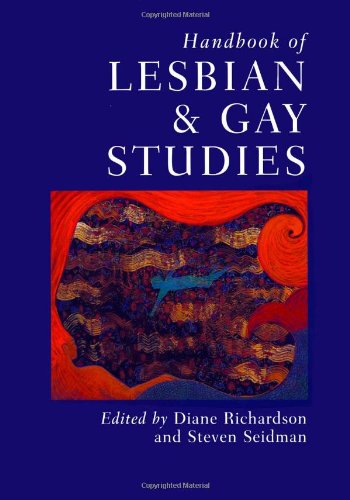Handbook of Lesbian and Gay Studies
Diane Richardson is well established as an international and national authority in the area of the sociology of sexuality, with many related publications. In particular, she has made a significant contribution to three different areas of this body of knowledge: theories of sexual identity; sociological understandings of HIV/AIDS; and feminist accounts of sexuality. She has previously undertaken a number of funded projects examining social and economic aspects of heterosexual transmission of HIV and has held Visiting Professorships/ Fellowships at a number of academic and research centres in the field of sexuality and gender divisions, including the Centre for Education and Research in Sexuality at San Francisco State University, the National Centre for AIDS Social Research, Sydney and Harvard University. Much of my work addresses the newly emergent body of theory on heterosexuality, especially in post modern, feminist and queer theory. My interests in this area include the relationship between concepts of citizenship and sexuality, identity and social change and the (hetero) sexualisation of the public/private divide. A series of articles are in press or in preparation reflecting these interests, in particular the relationship between concepts of citizenship and the institutionalisation of heterosexuality. In addition, I have a current interest in developing conceptual frameworks in the study of sexual violence; in particular the processes, by which violence to the person is defined, interpreted and legitimated. ... Read more Read less
The creation of a new field of lesbian and gay studies over the past thirty years has been a fascinating project. This volume brings together key authors in the field in 26 major essays and provides a clear sense of just how much has been achieved. It is a guide to the state of the art, and invaluable for scholars throughout the world' - Ken Plummer, Professor of Sociology, University of Essex; and Editor of Sexualities This book is unique in lesbian and gay studies. From politics to health, cyber-queers to queer families, the review essays in this volume cover all the important bases of GLB history and politics. The Introduction is a simple and accessible overview of the changing faces of theory and research over many decades. This book is bound to be an important resource in a burgeoning field' - Janice Irvine, Associate Professor of Sociology, University of Massachusetts, Amherst The Handbook of Gay and Lesbian Studies, assembled by two leading theorists of sexuality, makes available more than two dozen new cutting-edge essays in gay studies. Essential for social science scholars and students of gay/queer studies' - David F. Greenberg, Professor of Sociology, New York University With this benchmark work, lesbian and gay studies comes of age. Drawing from a rich team of global contributors and carefully structured to elucidate the core issues in the field, it constitutes an unparalleled resource for teaching, research and debate. The volume is organized into 4 sections: · History and Theory This covers the roots of lesbian and gay studies, the institutionalization of the subject in the Academy, the 'naturalness' of heterosexuality, science and sexuality, the comparative sociology of homosexualities and the heterosexual/homosexual division. · Identity and Community This examines the formation of gay and lesbian identities communities and movements, 'cyber-queer' research, sexuality and space, generational issues in lesbian and gay lifecycles and the subject of bisexuality · Institutions This investigates questions of the governance of sexualities, lesbian and gay health, sexualities and education, religion and homosexuality, homosexuality and the law, gay and lesbian workers, homosexuality and the family, and lesbian, gay and queer encounters with the media and popular culture · Politics This explores the formation of the gay and lesbian movements, impact of globalization, antigay and lesbian violence, nationalism and transnationalism in lesbian and gay studies and sexual citizenship. The result is an authoritative book that demarcates the field, stimulates critical discussion and provides lesbian and gay studies with an enriching focal reference point. It is, quite simply, a breakthrough work that will galvanize discussion and research for years to come. ... Read more Read less











